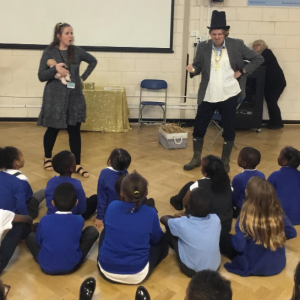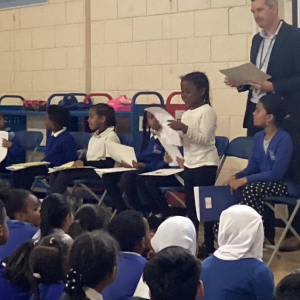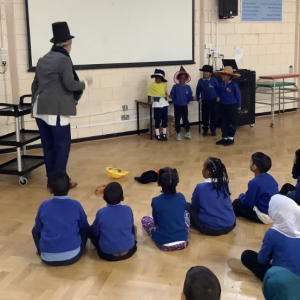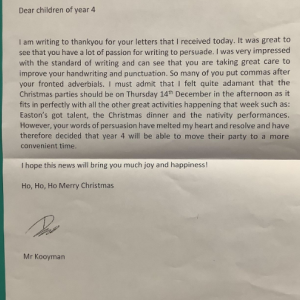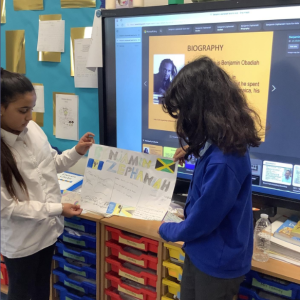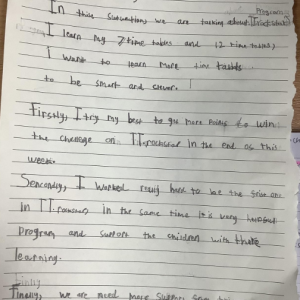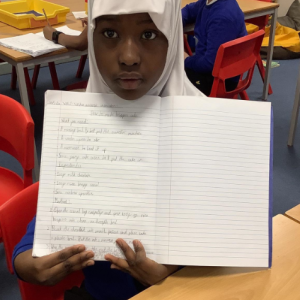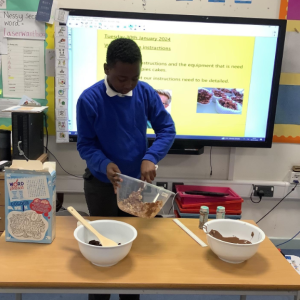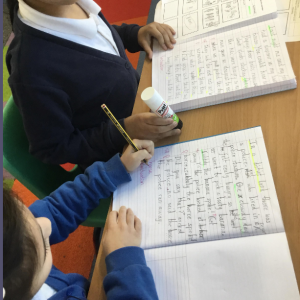Writing at Easton
Curriculum Intent
At Easton, our aim is that all children within our school love literacy, and are motivated to read and to express themselves through writing.
Our intention is that all children:
- are excited and motivated readers and writers
- are provided with a rich, wide-ranging and inspiring curriculum
- are exposed to a wide variety of high-quality literature
- internalise a bank of stories and non-fiction texts to support them in developing their writing techniques, vocabulary and confidence
- are taught phonics, grammar and spelling that is contextualised within writing
- are explicitly taught vocabulary to enable them to express themselves confidently and effectively
- participate in high quality shared and guided reading and writing, where the skills of being a confident reader and writer are modelled and taught
- receive feedback in a range of ways in order to move them on in their development and motivation as readers and writers
Implementation
At Easton we use the Talk for Writing (TfW) approach to the teaching of writing. It is a whole-school cumulative and systematic way of teaching, rooted in the principle that children must be able to express themselves orally in order to do the same in writing.
We also strongly believe that schools must prioritise children reading and being read to and this is inextricably linked with their development as writers. As children progress through Easton Academy, through TfW they build a bank of internalised texts and this is supplemented by picture books, fiction and non-fiction texts and poetry. We are committed to ensuring this range of reading and writing texts reflect the richly diverse community within which our school is set. Over time, this approach equips the children with the words and language they need to express themselves.
Children are immersed in TfW from Nursery to Y6. Each writing unit has three distinct phases (Imitation, Innovation and Independent Application) in a cumulative curriculum of specific story types and non-fiction text types. Alongside learning, analysing and developing a text, teachers act as expert models of writing skills through shared and guided writing session. Children’s work and ideas are shared, displayed, published and celebrated.
Grammar is taught directly within the units in the context of the unit text. Phonics, spelling and handwriting are taught explicitly in addition to the daily TfW lesson, and practised and embedded within children’s range of writing opportunities. We use the SoundsWrite approach to phonics and spelling.
We provide a wide range of reasons and purposes for writing across our wider school curriculum, and in the early years provide many opportunities for child-initiated writing.
Impact
The impact of our approach to the teaching of writing is that children at Easton become successful writers. They are increasingly confident and motivated to express themselves in writing. In addition, they are able to speak articulately using the words and phrases they have learned in the texts.
Enrichment
TfW units always begin with a “hook” or stimulus event to engage and enthuse them as writers. These opportunities include art, drama, trips, visitors, cooking and other activities.
In addition, there are opportunities across the school for cross-curricular writing, when children can use their new writing skills in topic-related contexts and become increasingly creative in their written responses.
SEND and Disadvantaged Pupils
TfW is highly inclusive and allows all children to access the writing curriculum. The focus on learning stories before writing means that children can access the same, or slightly modified, text and the range of activities and opportunities within the unit. Where appropriate, individuals or small groups may work towards their own specific targets within a unit.
